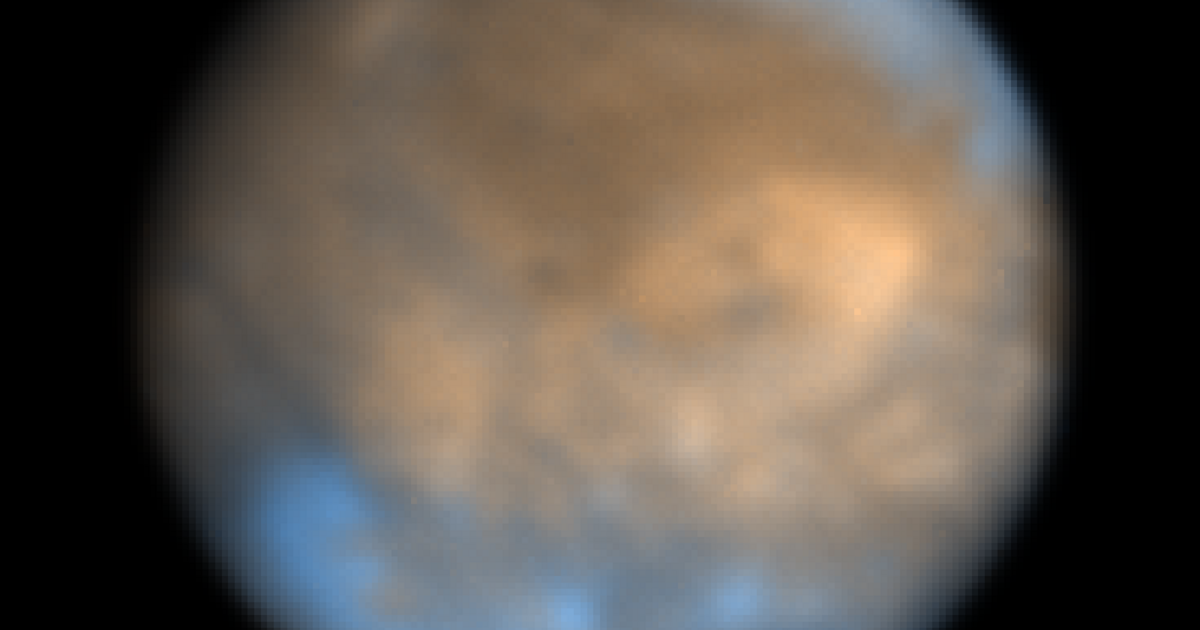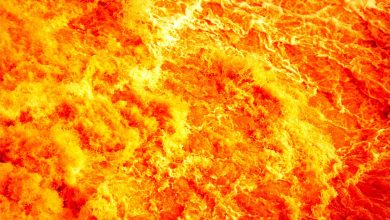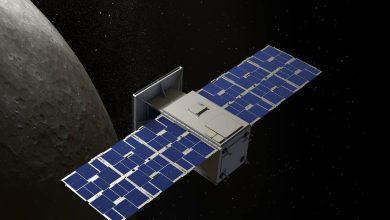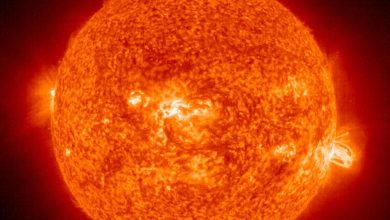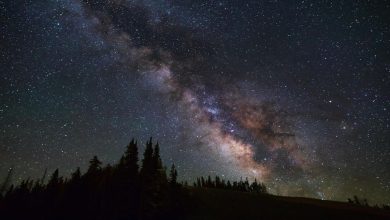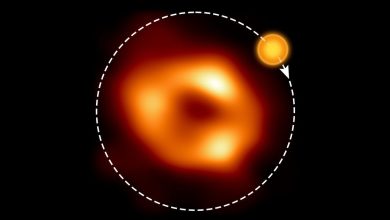The mixture of chemicals that make up the frozen surfaces of two of Jupiter’s largest moons has been revealed in the most detailed images ever taken by a telescope on Earth.
Planetary scientists from the School of Physics and Astronomy at the University of Leicester have unveiled new images of Europa and Ganymede, two future destinations for new missions to the giant planet system.
The images provide new information about the chemical composition of the moons, including geological features such as long, fault-like lines running through Europa’s surface.
Ganymede and Europa are two of the four largest moons orbiting Jupiter, known as the Galilean moons.
Europa is similar in size to Earth’s Moon, while Ganymede is the largest moon in the entire solar system.
PhD student Oliver King, from the University of Leicester’s School of Physics and Astronomy, said: “We have mapped the distributions of the various materials on the surface, including sulfuric acid frost which is mainly found on the side of Europe which is most strongly bombarded by the gases surrounding Jupiter.
“The modeling revealed that there could be a variety of different salts present at the surface, but suggested that infrared spectroscopy alone is generally unable to identify the specific types of salt present.”
The researchers used the Very Large Telescope (VLT) at the European Southern Observatory in Chile to observe and map the surfaces of the moons.
They recorded sunlight reflecting off the surfaces of Europa and Ganymede at different infrared wavelengths, producing a reflectance spectrum.
This was analyzed by developing a computer model that compares observations to different substances that have been measured in laboratories.
Images and spectra of Europa, published in the Planetary Science Journal, reveal that Europa’s crust is mostly composed of frozen water ice with non-glacial material contaminating the surface.
Ganymede’s observations, published in the journal JGR:Planets, show how the surface is made up of two main types of terrain.
These are young areas with large amounts of water ice and old areas made up of unknown dark gray material.
The icy areas – which appear blue in the images – include Ganymede’s polar ice caps and craters – where an impact event exposed fresh, clean ice from Ganymede’s crust.
The researchers also mapped how the size of ice grains on Ganymede varies across the surface and the possible distributions of a variety of different salts, some of which may have come from the moon itself.
Located at high altitude in northern Chile and featuring mirrors over eight meters in diameter, the Very Large Telescope is one of the most powerful telescopes in the world.
Mr King said: “It has allowed us to do detailed mapping of Europa and Ganymede, observing features on their surfaces less than 150km in diameter – all at distances of over 600 million kilometers from Earth.
“Mapping at this fine scale was previously only possible by sending a spacecraft up to Jupiter to observe the moons up close.”
Professor Leigh Fletcher, who supervised the VLT study, is a member of the science teams for the European Space Agency’s Jupiter Icy Moons Explorer (Juice) mission and NASA’s Europa Clipper mission, which will explore Ganymede and Europe closely in the early 2030s.
Juice is set to launch in 2023, with scientists from the University of Leicester playing a key role in its project to study Jupiter’s atmosphere, magnetosphere and moons.
Professor Fletcher said: ‘These observations from the ground whet the appetite for our future exploration of Jupiter’s moons.
“Planetary missions operate under difficult operational constraints and we simply cannot cover all the ground we would like, so tough decisions must be made about which areas of the moons’ surfaces merit the most examination.
“150 km scale observations such as those provided by the VLT, and eventually its massive successor the ELT (Extremely Large Telescope), help provide global context for spacecraft observations.”
#sharpest #terrestrial #images #Europe #Ganymede #reveal #icy #landscape
